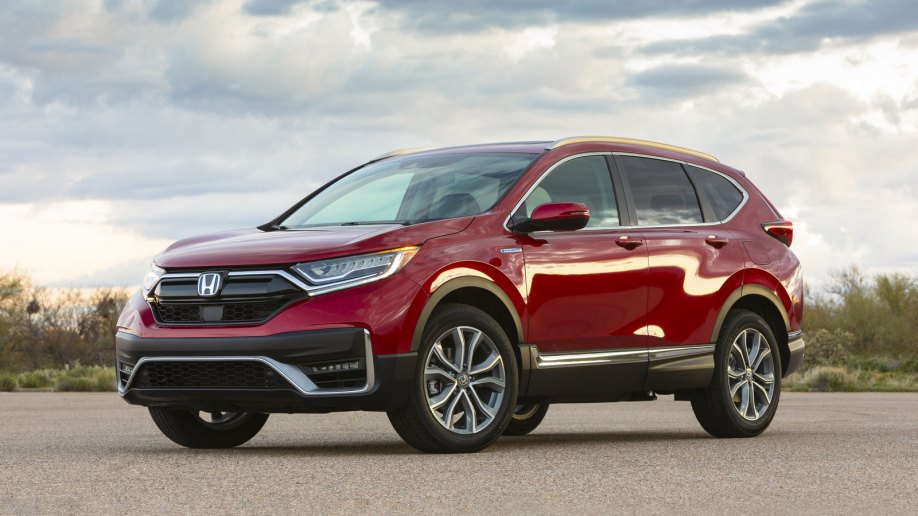Even in its final model year before a full redesign, the Honda CR-V remains one of our top-rated compact SUVs. It’s roomy, refined, reliable, and plenty of other things that don’t start with R. Comfortable and practical, for instance. All of which is to say the CR-V is an easy vehicle to recommend. But which CR-V to recommend? Turns out, that might be even easier. Let’s start by looking at the non-hybrid model.
2022 Honda CR-V EX AWD
Sticker price: $30,810
Monthly fuel cost: $164
1.5-liter turbocharged 4-cylinder engine
Continuously variable automatic transmission (CVT)
All-wheel drive (AWD)
190 horsepower @ 5,600 rpm
EPA city/highway combined fuel economy: 29 mpg
While the 2022 CR-V lineup starts at $26,800, for an apples-to-apples comparison we’re starting with the midgrade CR-V EX with AWD.
But that’s about as far as we need to go, as this contest was over as soon as it began. The all-gas CR-V is wonderful, but the hybrid model is even better and more affordable in the long run.
2022 Honda CR-V Hybrid EX
Sticker price: $32,010
Monthly fuel cost: $125
2.0-liter 4-cylinder engine + electric motor
Continuously variable automatic transmission (CVT)
All-wheel drive (AWD)
212 horsepower @ 6,200 rpm
EPA city/highway combined fuel economy: 38 mpg
Would you pay $1,200 to save more than $2,300 in fuel costs over five years? Of course. And what if we told you the same technology driving those fuel savings also delivers more power and greater responsiveness? Now you’d start to wonder what the catch is. Wait, we’re not finished. Would you believe that initial $1,200 upcharge is really just a $200 premium when all is said and done?
Okay, let’s get out the calculator.
As you can see in comparing the numbers above, the CR-V Hybrid EX stickers at $1,200 more than its non-hybrid counterpart. But it delivers nine additional miles per gallon, which works out to a monthly savings of $39 (at the current national average of $3.80 per gallon and 15,000 miles per year). Over a 5-year ownership period, those pump savings add up to $2,340, more than recouping that $1,200.
But how is that $1,200 premium actually just $200? Because the CR-V Hybrid enjoys slightly higher resale values than the non-hybrid. So while you’ll indeed pay $1,200 more to start, the hybrid will fetch close to $1,000 more than the non-hybrid when sold after five years.
Bringing it all back together, the hybrid will cost you $200 and save you $2,340. We like that math.
The decision would get complicated if the hybrid demanded compromises in other areas, but it doesn’t. Even if the total costs were the same, we’d still choose the hybrid. With more total power and the increased responsiveness provided by instant-on electric torque, we prefer the way it drives.
Yes, but…
In our tidy little scenario, we’ve assumed both models are available and can be had for sticker price. Depending on when and where you’re buying, neither may be true. Also, gas prices and resale values are sure to fluctuate across the next five years. There are all sorts of variables that could impact the math in our example. But if we were in the market for a CR-V and had the chance to buy a hybrid model for just $1,200 more than an equivalent non-hybrid, we wouldn’t think twice. And that’s not likely to change anytime soon.
More 2022 Honda CR-V
Read our full review or build and price your own 2022 Honda CR-V Hybrid. Or, if you prefer, the non-hybrid. If you’re ready to start shopping, see all the new Honda CR-V models for sale near you.








